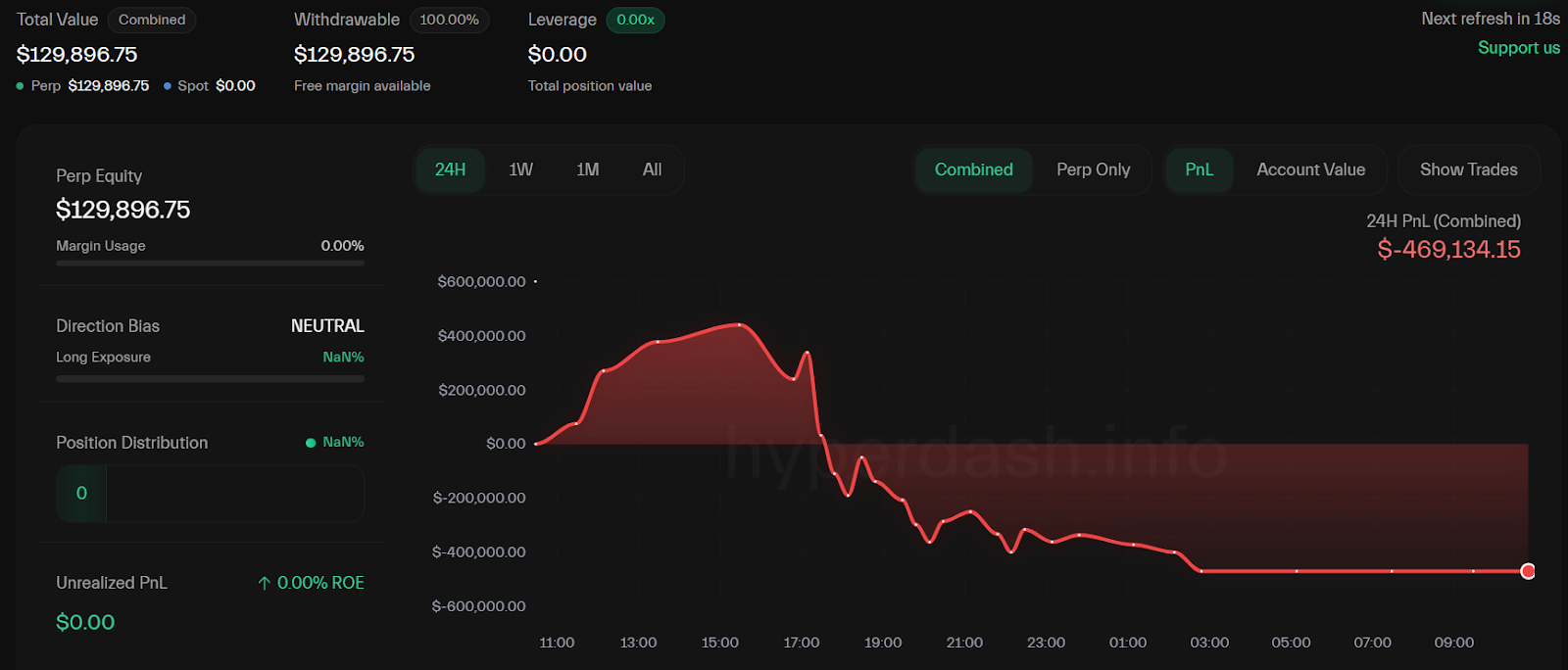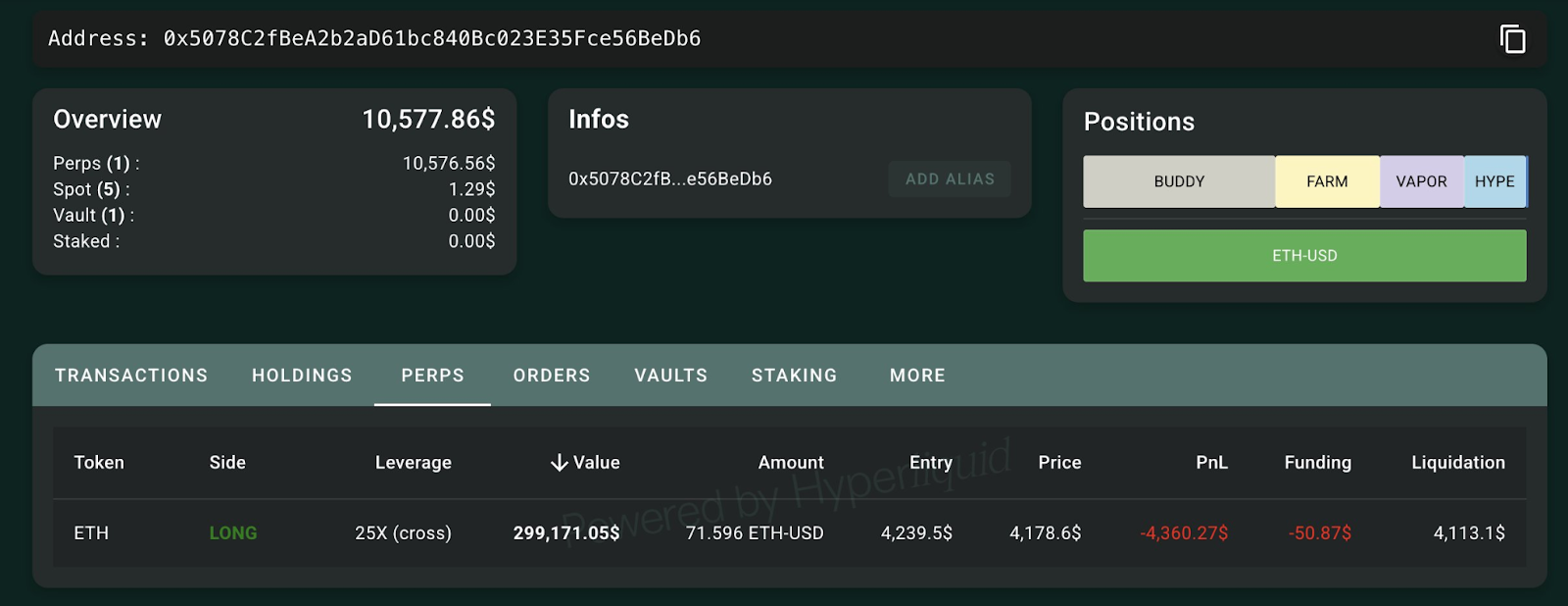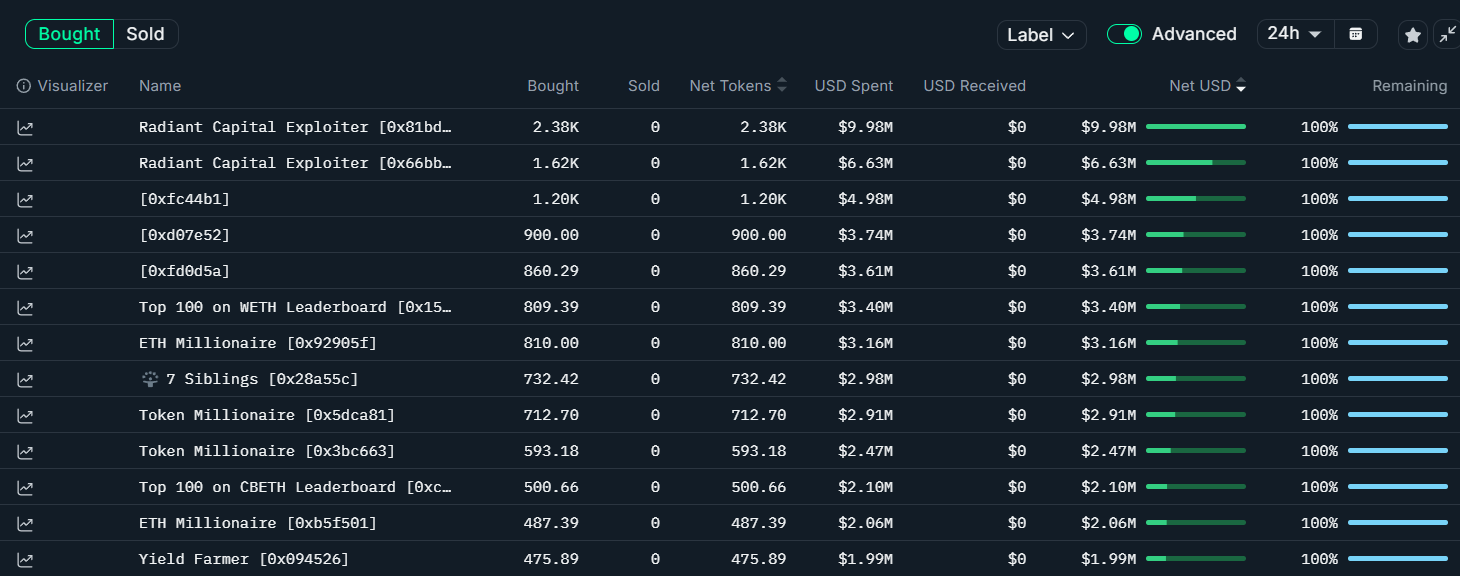Ether liquidation wiped nearly all gains from a trader who grew $125,000 to $43M — a $6.22M loss left $771K after an ETH dip near $4,000, underscoring extreme market volatility and the liquidation risk of leveraged positions.
-
Trader nearly liquidated after ETH fell to ~$4,000
-
Whales sold $147M of ETH while others bought selectively during the correction
-
Lookonchain and Nansen on-chain data highlight concentrated liquidations and opportunistic buys
Ether liquidation: Trader’s $43M peak cut to $771K after $6.22M loss—read the concise market update and analysis now.
After making nearly $7 million in four months, this trader lost almost all his gains in two days, illustrating the unpredictability of the crypto markets.
A cryptocurrency trader who recently increased their account from $125,000 to more than $43 million was almost liquidated on Wednesday for $6.2 million after Ether briefly fell near the $4,000 level.
The liquidation took place on the decentralized exchange Hyperliquid as Ether (ETH) dipped close to $4,000 amid a broader market correction, highlighting the volatility that can catch even seasoned traders off guard.
It came two days after the trader had turned an initial investment of $125,000 into more than $43 million at its peak, before locking in nearly $7 million worth of profit on Monday, Cointelegraph (plain text) reported.
“This legendary trader went long on $ETH again but was liquidated in the market crash, losing $6.22M,” said blockchain data platform Lookonchain (plain text) in a Wednesday X post. “Now only $771K remains—4 months of gains nearly wiped out in just 2 days.”

Related: Crypto in US 401(k) retirement plans may drive Bitcoin to $200K in 2025 (plain text)
What happened when the trader’s Ether position was liquidated?
The trader’s leveraged long on ETH was hit by a rapid price drop to near $4,000, triggering a $6.22M liquidation that reduced the account to about $771K. Leveraged positions on decentralized venues like Hyperliquid are highly sensitive to short-term volatility.
The event unfolded over two days: peak gains were locked in, then a renewed long exposed the account to the correction. On-chain monitoring platforms Lookonchain and Hyperdash captured the sequence and wallet movements. This highlights how quickly realized and unrealized gains can reverse under leverage.
How did other prominent traders fare during the same downturn?
Multimillionaire trader James Wynn saw a partial liquidation reduce his long ETH exposure to roughly $300,000, which would be liquidated if ETH falls below $4,113, according to Lookonchain (plain text).

Wynn has publicly said he is “all-in” and has no stablecoins left, noting he would cut living expenses if a promised altcoin season fails to materialize. This illustrates behavioral risk among high-conviction traders when facing prolonged corrections.
Why did whales sell and who bought during the dip?
Ether whales sold sizeable positions, with three wallets moving a combined $147M of ETH: wallet “0x1D8d” sold ~$77M, “0x5A8E” sold ~$57M, and “0x3684” sold >$12M, per Lookonchain and chain analytics (plain text).
Conversely, top traders tracked by Nansen (plain text) and other on-chain observers made opportunistic buys: wallet “0x159” acquired $3.4M, “0x929” bought $3.16M, and “0x5dc” bought $2.9M of ETH.

Surprisingly, even an exploiter-linked wallet associated with the Radiant Capital incident acquired $16.6M of ETH, underlining diverse market participant behavior in corrections.
When could macro policy influence the next crypto move?
Market participants are focused on US Federal Reserve Chair Jerome Powell’s Jackson Hole speech as a defining moment. Analysts such as Iliya Kalchev at Nexo (plain text) warn central bank signals may matter more than charts in the near term.
Frequently Asked Questions
How do liquidations on decentralized exchanges occur?
Liquidations occur when leveraged positions fall below maintenance margin; the exchange automatically closes positions to prevent further losses, converting collateral to cover the shortfall. Decentralized platforms use on-chain oracles and automated mechanisms for this process.
Can on-chain data predict further large liquidations?
On-chain monitoring shows exposure levels and concentrated positions, which can flag liquidation risk. However, predictions are probabilistic—price swings and off-chain liquidity events can change outcomes quickly.
Key Takeaways
- Extreme volatility: Leveraged ETH longs can be wiped quickly when price gaps occur.
- On-chain concentration: Whale selling and concentrated positions increase systemic liquidation risk.
- Risk management: Conservative leverage, profit-taking, and on-chain monitoring are vital for traders.
Conclusion
Ether liquidation events show how quickly leveraged gains can reverse; this case reduced a $43
Ether liquidation events show how quickly leveraged gains can reverse; this case reduced a $43M peak to $771K after a $6.22M loss. Traders should combine conservative leverage, stop-loss discipline, and on-chain monitoring to manage risk. For continuing coverage and on-chain analysis, follow COINOTAG updates and official on-chain data providers (plain text).
